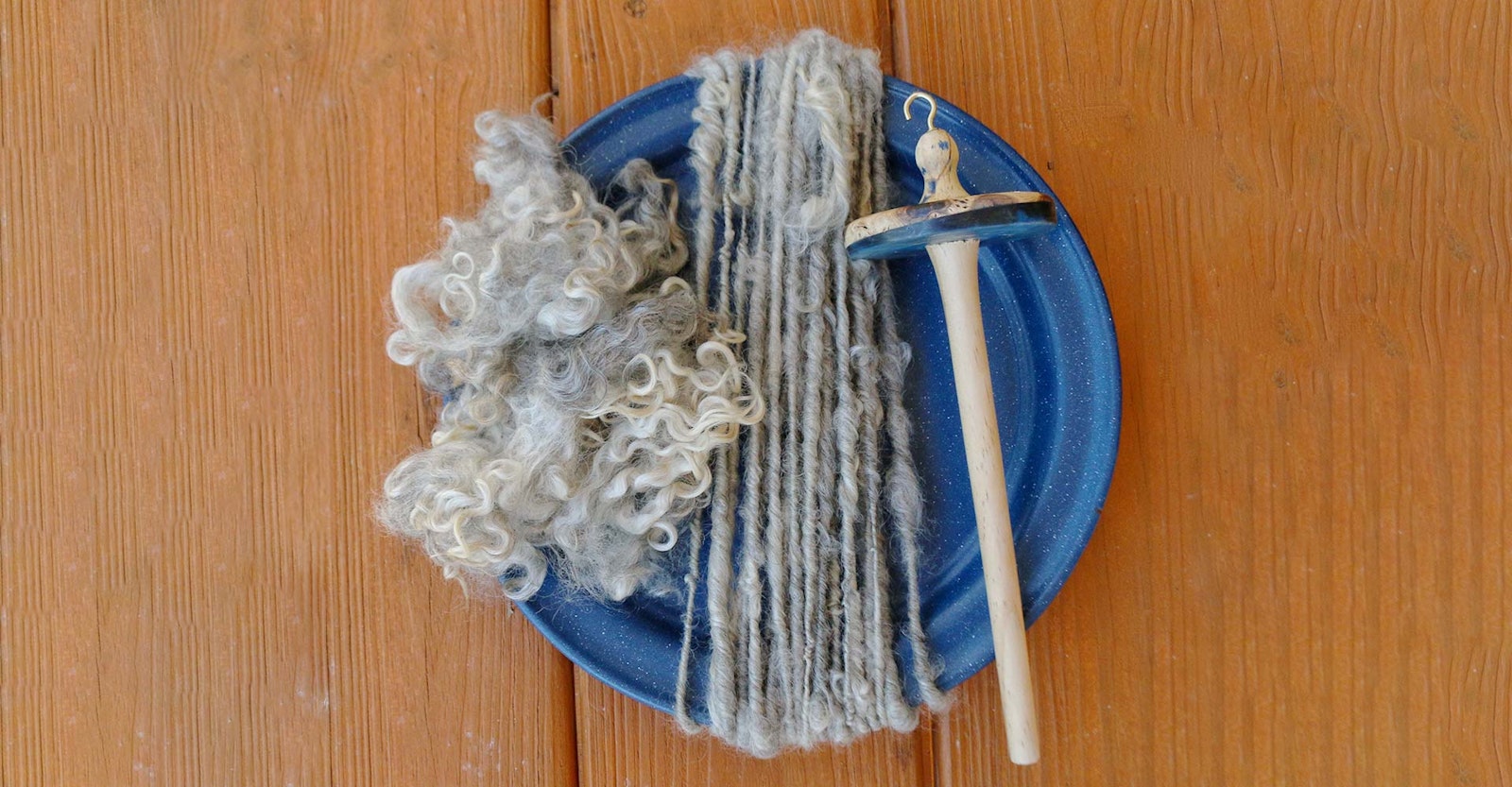I have Lincoln longwool fleece scattered across my house. Loose locks are in a Tupperware bowl on the living room floor; my toddler steals the curly wool to use as make-believe spaghetti. Newly spun singles yarn dries on the back deck, fresh from the warm bath to set the twist. A drop spindle lies on the dining room table next to a cotton-candy-like pile of carded wool. Next to the television sits a vest I have just begun to knit up using longwool yarn already dried and ready to go. After over 20 years of knitting, I am officially a spinner.
Spinning has been my pandemic project, and I am not alone. Fiber artists around the country and around the world have delved deeper into their craft during shutdowns and while quarantining, moving from knitting or crochet all the way to processing raw fleece.
Amanda Deplewski and I both became immersed in spinning through the Shave ’Em to Save ’Em (SE2SE) program run by the Livestock Conservancy. To encourage fiber artists to use wool from rare breeds, the Conservancy sends out passports to SE2SE members. Every time I use 4 ounces of wool—yarn, roving, or fleece—I earn a sticker for my passport. There are 23 breeds in all.
Originally, Amanda just planned to use commercially spun yarn for her crochet projects. Soon, however, she realized that some breeds were only available as roving or raw fleece. After buying an inexpensive drop spindle on Amazon and watching explainer videos, she ordered her first fleece, a Barbados Blackbelly. Unfortunately for a beginner, Barbados Blackbelly sheep are a hair breed, which means the small amounts of wool they do grow are mixed in with coarse hair.
But Amanda persisted! “The undercoat was long enough that I was able to handcard it into rolags, and then I just spun and parked every couple inches,” she explained. She tried a much easier Dorset Horn roving next and upgraded to a better spindle.

Left: Erika models her handspun headband in a smartphone selfie. Right: A handspun, handknitted cowl keeps Erika cozy on walks in the woods.
Hooked, Amanda plans to keep spinning into the future. “There’s something magical about crocheting with yarn you made,” she says. “I caked up the Dorset Horn yarn on my ball winder and got misty eyed.”
Stephanie Convery, deputy culture editor of the Guardian’s Australian edition, described her fleece immersion in a recent article: “I started knitting as pure procrastination. Now it’s opened up a whole new world for me.” It struck a chord with thousands of fiber artists. Her first purchase in 2021 was a raw fleece from a Tasmanian sheep.
She has knitted nearly every day during the pandemic, through multiple lockdowns, and has recently been learning to spin on a vintage wooden spinning wheel. Is it easy? No. Does she love it? Yes.
“In Melbourne, Australia, where I live, we are a little out of sync with the rest of the world—despite successful suppression in the rest of the country, my city went through close to nine continuous months of hard lockdown in 2020, including curfews and restrictions on movement, due to a second wave that very nearly got completely out of the government’s control,” she explained when I spoke with her. “I knitted voraciously—for my own sanity really—through that lockdown. It had become such an emotional crutch for me that my husband noticed and decided to buy me a spinning wheel.”
Stephanie’s new spinning efforts led to a renewed appreciation for making yarn. “I’m also rather in awe of all of our foremothers and forefathers who performed this craft by hand for so long,” she told me. “It looks so simple, but the knack of it is all in the fine details. I’ve been knitting for so long that even challenging garments are relaxing, but spinning at the moment is all uphill!”
For me, the physicality of spinning, which on a drop spindle means using both hands and a lot of stopping while I simultaneously handcard my wool, distracted from the stresses of working from home with a baby and watching the COVID-19 numbers spike and fall and spike again while waiting for a vaccine. I may not be traveling, but I feel like I visit the farms from which my fiber comes, from the heat of Orlando, Florida, to the mountains of Colorado, and everything in between.
I am so proud when I wear the cowl or headband I knitted with yarn I spun myself, and these days I hold fast to good feelings!
Resources
- Convery, Stephanie. “I Started Knitting as Pure Procrastination. Now It’s Opened Up a Whole New World for Me.” Guardian Australia, January 6, 2021. theguardian.com/commentisfree/2021/jan/07/i-started-knitting-as-pure-procrastination-now-its-opened-up-a-whole-new-world-for-me.
- “Challenge Accepted! Shave ‘Em to Save ‘Em.” Spin Off, Spring 2019, 18.
Erika Zambello is a writer and communications specialist living in Florida. She is a fan of knitting on the move, especially during walks, hikes, and kayak trips. You can follow her fibercraft explorations at @knittingzdaily on Instagram.
We'd love to hear how you started spinning! Email [email protected] with your stories!
This article first appeared in Spin Off Fall 2021.

